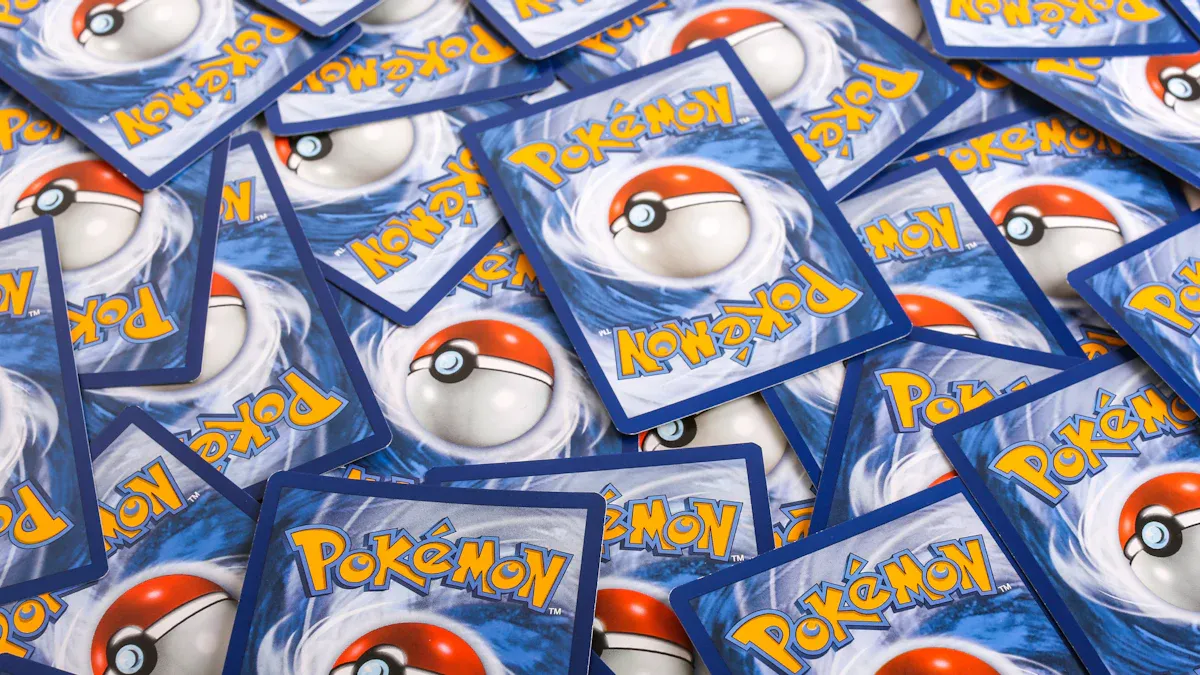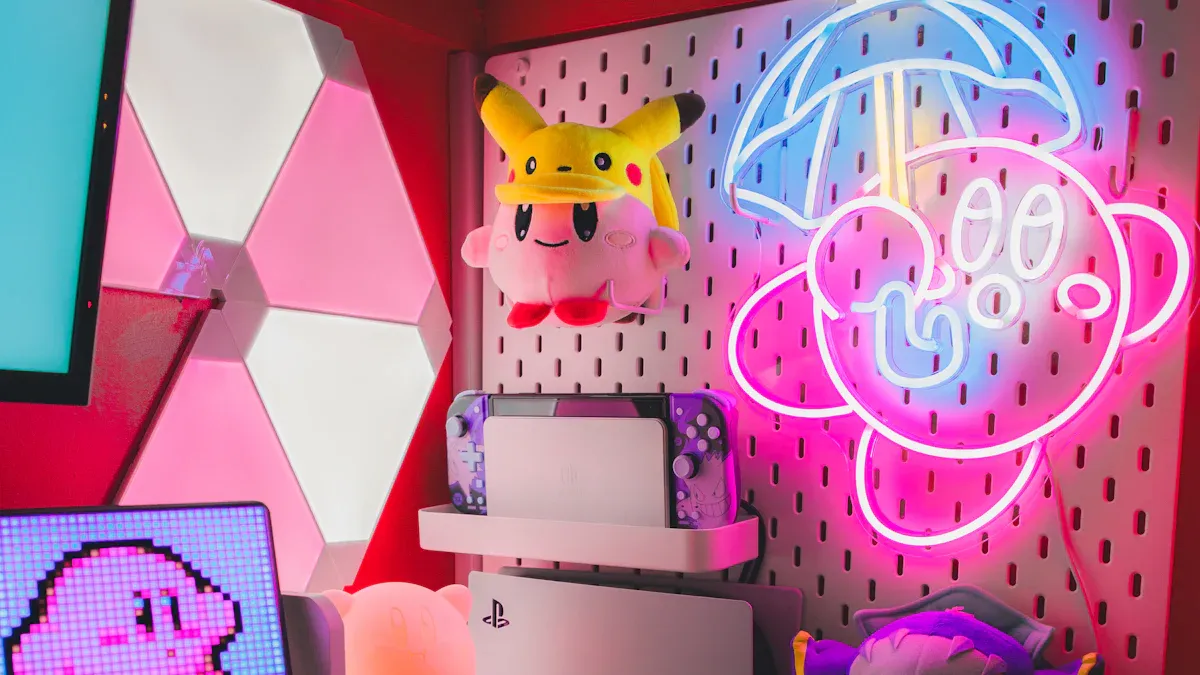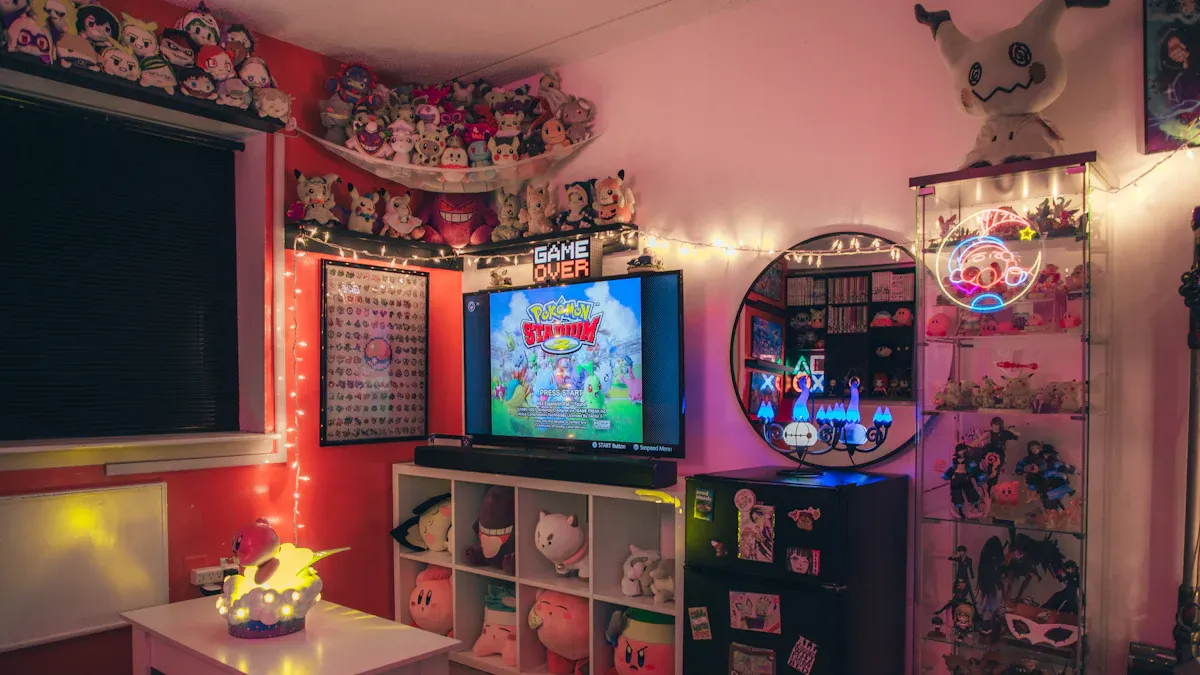How AI Brings Studio Ghibli Magic to Pokémon Art

Have you ever imagined what Pokémon would look like if they existed in a Studio Ghibli-inspired world? Thanks to AI, that vision can now come to life! Using advanced tools like GANs and diffusion models, the magical essence of Studio Ghibli blends seamlessly with the playful designs of Pokémon. This fascinating fusion, often referred to as studio ghibli pokemon ai, has captivated fans across the globe. It’s incredible how AI can mimic an art style so flawlessly, transforming beloved Pokémon into enchanting works of art. Which of your favorite Pokémon would you love to see in this whimsical Studio Ghibli style?
Key Takeaways
- AI can turn Pokémon into Studio Ghibli-style art. It mixes two loved worlds into magical creations.
- To train AI, it is shown thousands of pictures. This helps it learn Studio Ghibli's special look and colors.
- Tools like GANs and diffusion models help AI make amazing Ghibli-like Pokémon images.
- Combining these styles has become very popular online. It shows how technology can bring fans together and spark creativity.
- AI art raises questions about fairness and originality. But it also gives artists new ways to be creative.
How AI Creates Studio Ghibli Pokémon Art

Image Source: unsplash
The Role of AI in Artistic Style Replication
Have you ever wondered how AI can mimic the charm of Studio Ghibli’s art? It’s all about teaching AI to recognize patterns and details. Studio Ghibli’s style is famous for its dreamy landscapes, soft colors, and intricate details. AI tools analyze these elements and learn to replicate them in new creations. This process involves feeding the AI with countless examples of Ghibli-inspired art until it understands what makes the style so unique.
For instance, AI has been used to transform personal photos into scenes that look like they belong in a Studio Ghibli movie. This shows how well AI can replicate complex artistic styles. However, some people question whether AI-generated art can truly capture the emotional depth of human-created works. While AI can recreate the visual magic, the heart and soul of the original art often remain a topic of debate.
Still, the ability of AI to replicate such a beloved style has introduced new audiences to the magic of Studio Ghibli. It’s fascinating to see how technology can bring this iconic aesthetic to life in unexpected ways.
Training AI Models on Studio Ghibli’s Aesthetic
To create art that feels like it came straight out of a Studio Ghibli film, AI needs to be trained on the studio’s unique aesthetic. This training process involves feeding the AI with thousands of images from Ghibli’s films. These images include everything from lush forests and cozy villages to the expressive faces of characters. The AI studies these visuals to understand the patterns, textures, and color palettes that define the Ghibli style.
Once the AI has learned these elements, it can apply them to other subjects, like Pokémon. Imagine your favorite Pokémon reimagined with the soft, painterly look of a Ghibli character. The AI doesn’t just copy the style—it adapts it to fit the new subject. This is what makes studio ghibli pokemon ai so exciting. It’s not just about blending two worlds; it’s about creating something entirely new that feels familiar and magical at the same time.
Adapting Pokémon Characters with AI Tools
Adapting Pokémon into the Studio Ghibli style is no small feat. Pokémon characters have distinct designs that fans know and love. AI tools must preserve these key features while giving them a Ghibli-inspired makeover. This involves a delicate balance of staying true to the original Pokémon designs and incorporating the soft, whimsical elements of Ghibli’s art.
For example, AI considers factors like the Pokémon’s species, type, and abilities when creating its new design. The table below highlights some of the key aspects AI focuses on during this process:
| Key Aspect | Description |
|---|---|
| Discrete State and Action Spaces | The game mechanics allow for a clear translation of actions and states into text, facilitating AI understanding. |
| Turn-Based Format | This format reduces the complexity of real-time decision-making, allowing AI to focus on reasoning. |
| Strategic Complexity | Players must consider various factors (species, type, ability, stats) which the AI must also learn to navigate effectively. |
By combining these elements, AI can create designs that feel authentic to both Pokémon and Studio Ghibli fans. The result? Stunning artwork that captures the best of both worlds. It’s no wonder studio ghibli pokemon ai has become such a viral sensation among fans.
Tools and Techniques in Studio Ghibli Pokémon AI
Generative Adversarial Networks (GANs)
If you’ve ever wondered how AI can create such stunning Studio Ghibli-inspired Pokémon art, Generative Adversarial Networks (GANs) play a big role. GANs are like a creative tug-of-war between two AI models: the generator and the discriminator. The generator tries to create images that look like they belong in the Studio Ghibli universe, while the discriminator judges whether the images are convincing enough. This back-and-forth process helps the AI improve its creations over time.
Think of it like teaching an artist to paint. The generator starts with rough sketches, and the discriminator critiques them. With each round, the generator gets better at capturing the soft colors, dreamy landscapes, and intricate details that define Studio Ghibli’s style. By the end, you get Pokémon characters that look like they’ve stepped right out of a Ghibli film. It’s a fascinating process that combines creativity with technology.
Diffusion Models and Style Transfer Algorithms
Diffusion models and style transfer algorithms are another set of tools that make studio ghibli pokemon ai possible. These models work by gradually transforming an image into something new while preserving its original essence. For example, a diffusion model might start with a simple sketch of Pikachu and slowly add layers of Ghibli-inspired textures and colors until the final image looks like a masterpiece.
Style transfer algorithms take this a step further. They analyze the unique features of Studio Ghibli’s art—like its soft brushstrokes and vibrant palettes—and apply them to Pokémon designs. To measure how well these algorithms work, researchers use metrics like CLIP similarity scores. These scores compare the generated images to both the original Pokémon designs and Ghibli’s art style. Higher scores mean the AI has done a better job blending the two styles. In fact, a method called InST has been shown to outperform older techniques like AdaAttN, achieving more accurate style transfers and better content preservation.
This combination of diffusion models and style transfer algorithms ensures that the final artwork feels authentic to both Pokémon and Studio Ghibli fans. It’s like watching two worlds collide in the most magical way.
OpenAI’s Image Generators and Their Role
OpenAI’s image generators, like DALL·E, have also contributed to the rise of studio ghibli pokemon ai. These tools use advanced machine learning techniques to create images based on text prompts. You could type something like “Totoro-style Pikachu in a lush forest,” and the AI would generate an image that matches your description. It’s like having a personal artist who can bring your imagination to life in seconds.
What makes OpenAI’s tools so powerful is their ability to understand context. They don’t just slap a Ghibli-style filter onto a Pokémon image. Instead, they consider the details of the prompt, the characteristics of the Pokémon, and the nuances of Ghibli’s art. This results in images that feel thoughtful and intentional, rather than random or generic.
These tools have made it easier than ever for fans to experiment with blending different art styles. Whether you’re an artist looking for inspiration or just a fan curious about what your favorite Pokémon would look like in a Ghibli world, OpenAI’s image generators offer endless possibilities.
Public and Fan Reactions to Studio Ghibli Pokémon AI

Image Source: unsplash
Positive Reception and Viral Creations
The fusion of Studio Ghibli’s dreamy aesthetic with Pokémon’s playful designs has taken the internet by storm. Fans can’t seem to get enough of this magical combination. Social media platforms have become hotspots for sharing these AI-generated creations. For example:
- A Facebook post showcasing Studio Ghibli Pokémon art received over 1,400 reactions and was shared 4,200 times.
- On Twitter, re-uploaded images earned an impressive 145,500 likes and 26,600 retweets.
These numbers show just how much people love this unique blend of styles. You’ve probably seen these images pop up on your feed, sparking conversations and inspiring fan art. The viral success of studio ghibli pokemon ai highlights how technology can bring fans together in creative and unexpected ways.
Criticisms from Artists and Creators
While fans celebrate this artistic fusion, not everyone is thrilled. Many artists have raised concerns about the rise of AI-generated art. Some worry that AI might overshadow human creativity. Others feel that the algorithms used in these tools lack diversity and fail to represent different perspectives.
"This isn’t going to stop. Art is dead, dude. It’s over. A.I. won. Humans lost."
This quote reflects the frustration some creators feel. On the other hand, a few artists see AI as a tool to enhance their imagination rather than replace it. The debate continues, but it’s clear that AI’s role in art is a hot topic.
The Nostalgia Factor in Fan Engagement
Nostalgia plays a huge role in why fans connect with Studio Ghibli Pokémon art. Millennials and late Gen Z grew up watching Studio Ghibli films and playing Pokémon games. Combining these two beloved franchises creates a powerful emotional pull.
| Evidence Description | Impact on Nostalgia Engagement |
|---|---|
| Virtual conventions during the pandemic showed the potential for hybrid fan events. | Fans seek more inclusive ways to engage with their favorite franchises. |
| Rewatching classic series like Dragon Ball Z and Naruto remains popular. | Nostalgia drives fans to revisit beloved series, including Studio Ghibli and Pokémon. |
| Iconic franchises like Pokémon and Studio Ghibli shaped millennial and Gen Z culture. | These franchises play a key role in creating shared nostalgic experiences. |
This nostalgia-driven connection explains why studio ghibli pokemon ai resonates so deeply with fans. It’s not just art—it’s a trip down memory lane.
Ethical Concerns in AI-Generated Art
Originality and Plagiarism Debates
AI-generated art often sparks debates about originality. You might wonder, "Is it really art if a machine creates it?" Critics argue that AI tools mimic existing styles rather than inventing something new. For example, Hayao Miyazaki, the co-founder of Studio Ghibli, once called AI-generated animation an "insult to life itself." His words highlight the tension between traditional artistry and machine-made creations.
Studio Ghibli’s animators spend years perfecting their craft. The documentary 10 Years with Hayao Miyazaki shows the painstaking effort behind their work. In contrast, AI can replicate similar styles in minutes. This speed raises questions about fairness and respect for the original creators. When AI borrows heavily from an artist’s style, is it inspiration or plagiarism? That’s a question many are still trying to answer.
Copyright Issues with Studio Ghibli’s Style
Copyright adds another layer of complexity. Studio Ghibli’s art style is iconic, but it’s also protected by intellectual property laws. If AI generates art that looks like it belongs in a Ghibli film, who owns the rights? The person who used the AI? The creators of the original style? Or the AI itself? These questions don’t have clear answers yet.
Some argue that using Ghibli’s style without permission disrespects the studio’s legacy. Others believe AI-generated art falls into a legal gray area. After all, the AI isn’t copying exact images—it’s creating something new based on patterns it learned. Still, this doesn’t erase the ethical concerns. Shouldn’t artists have a say in how their work inspires future creations?
Balancing AI Innovation with Human Creativity
AI can do amazing things, but it’s not a replacement for human creativity. Think of it as a tool, like a paintbrush or a camera. It helps you bring your ideas to life, but the heart of the art still comes from you. Research shows that AI works best when it enhances human creativity rather than replacing it. Machines can handle the technical side, but they can’t replicate emotional depth or cultural meaning.
Over-relying on AI might even stifle your creativity. If you let a machine do all the work, you might struggle to come up with your own ideas. That’s why it’s important to strike a balance. Use AI to explore new possibilities, but don’t forget the value of your unique perspective. After all, the magic of art lies in the human touch.
Broader Implications of AI in Art
AI’s Impact on the Creative Process
AI is changing how you approach art. Instead of starting with a blank canvas, many artists now begin with AI-generated concepts. This shift lets you focus on refining ideas and adding personal touches rather than spending hours on technical execution. Imagine setting parameters, providing prompts, and selecting from AI-generated options. You can then combine these outputs and add your unique flair to create something truly original.
Here’s how AI is reshaping creative workflows over time:
| Year | Market Size (in billion USD) | Growth Rate (%) |
|---|---|---|
| 2024 | 0.43 | N/A |
| 2029 | 2.51 | 42.4 |
This rapid growth shows how AI is becoming a key part of the creative process. It’s not replacing you as an artist—it’s giving you new tools to explore your imagination.
Commercialization of AI-Generated Art
AI-generated art isn’t just a creative tool; it’s also a booming market. By 2025, the market value of AI art is expected to reach $5.3 billion, with a compound annual growth rate of 28.9%. That’s a huge leap from today. AI art exhibitions have also increased by 25% in the past three years, showing how much people are embracing this new form of creativity.
| Year | Market Value (in billion USD) | CAGR (%) | Percentage of Contemporary Art Market |
|---|---|---|---|
| 2024 | 3.2 | N/A | N/A |
| 2025 | 5.3 | 28.9 | 5% |
| 2033 | 40.4 | N/A | N/A |
With 27% of Americans already viewing AI-generated art, it’s clear this trend is here to stay. Whether you’re an artist or a collector, AI is opening up exciting opportunities in the art world.
The Future of Art in an AI-Driven World
The future of art looks brighter than ever with AI. Advanced systems will soon create emotionally resonant artworks, while new art forms and collectibles will emerge. AI tools are also becoming more accessible, allowing anyone—even without formal training—to create art. This could lead to a surge in diverse voices and perspectives, much like the digital revolution in music and photography.
Here’s what you can expect in the coming years:
- AI will personalize artistic experiences, tailoring them to your preferences.
- Art installations might respond to your emotions, creating interactive experiences.
- Artists will collaborate with AI as creative partners, leading to groundbreaking innovations.
AI isn’t just a tool; it’s a partner that challenges traditional ideas of creativity. The possibilities are endless, and you’re part of this exciting journey.
AI is transforming the art world by blending the enchanting Studio Ghibli style with the playful charm of Pokémon. This creative fusion has sparked viral success, with images receiving thousands of likes and shares on platforms like Facebook and Twitter. However, it also raises ethical concerns about originality and the role of human creativity. As AI continues to evolve, the challenge lies in balancing innovation with respect for traditional artistry. By harmonizing these elements, you can ensure that the magic of art remains both human and machine-driven.
FAQ
What is Studio Ghibli Pokémon AI?
Studio Ghibli Pokémon AI refers to AI-generated art that combines the whimsical style of Studio Ghibli with Pokémon designs. AI tools like GANs and diffusion models create these unique images by blending the two aesthetics, resulting in magical, fan-favorite creations.
Can I create Studio Ghibli Pokémon art myself?
Yes! Tools like DALL·E or other AI image generators let you create your own Studio Ghibli Pokémon art. Just input a text prompt like “Ghibli-style Pikachu in a forest,” and the AI will generate an image based on your description.
Is AI-generated art considered original?
This is a hot topic. AI art is based on patterns learned from existing works, so some argue it’s not entirely original. However, it creates new combinations and interpretations, which many consider a form of creativity.
Are there legal issues with using Studio Ghibli’s style?
Yes, there can be. Studio Ghibli’s art style is protected by copyright. Using it without permission, even through AI, might raise legal and ethical concerns. Always check the rules before sharing or selling AI-generated art.
Why is Studio Ghibli Pokémon AI so popular?
It’s all about nostalgia! Fans love seeing two beloved franchises combined. The dreamy Ghibli aesthetic paired with playful Pokémon designs creates a magical blend that resonates emotionally with people who grew up with both.